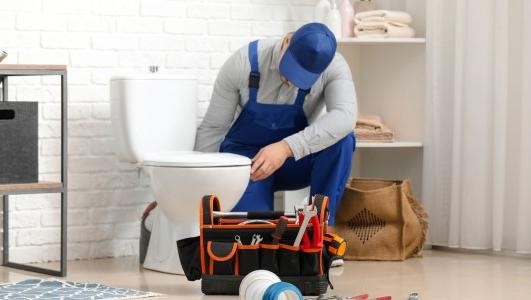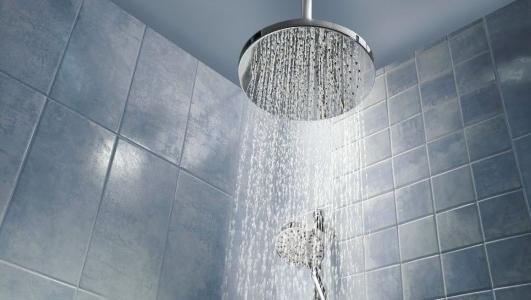
A Homeowner’s Guide to Fixing Common Plumbing Issues

Plumbing issues are an inevitable part of homeownership. While some problems are minor and can be fixed with a little bit of DIY, others may require professional intervention. Knowing when to tackle an issue yourself and when to call for help is crucial for maintaining your home’s plumbing system and avoiding unnecessary costs. In this guide, we’ll walk you through some common plumbing issues, offering tips on how to troubleshoot them and advice on when to seek professional assistance.
1. Running Toilets
Problem: A running toilet can use a significant amount of water. This issue is often caused by a faulty flapper, fill valve, or overflow tube. Modern toilets use about 1.6 gallons of water per flush, while older toilets can use around 3.5 to 7 gallons per flush, meaning a leaky toilet can consume a significant amount of water quickly.
Solution:
• Check the flapper: The flapper is the rubber seal that prevents water from continuously flowing into the bowl. If it’s worn or damaged, replace it.
• Adjust the Fill Valve: The fill valve controls the water level in the tank. Make sure it’s set correctly and that the float is moving freely.
• Check the Chain: The chain connects the handle to the flapper. Ensure it’s not too long or too short.
• Listen: If you still hear the toilet running after you’ve left the restroom, there’s a good chance that it’s leaking water.
• When to Call the Plumber: If the problem persists after these fixes, or if you’re uncomfortable making these repairs, it’s best to call a plumber. They can quickly identify and fix complex issues.

2. Low Water Pressure
Problem: Low water pressure can be frustrating and is often due to clogged aerators, leaks, or issues with the water supply.
Solution:
• Inspect the Faucets: Check all the faucets in your house to determine if the low water pressure is isolated to a single faucet or multiple fixtures.
• Check the Aerator: The aerator is a small screen at the end of your faucet. Remove it and clean it with a small brush.
• Inspect the Showerhead: Mineral deposits can clog showerheads, reducing water flow. Soak it in vinegar to remove buildup.
• Main Water Shut-Off Valve: Make sure your main water valve is fully open.
• When to Call the Plumber or Water Company: If you can’t identify the cause or have tried these solutions and the problem persists, it may be time to call a plumber. In some cases, low water pressure could be due to issues with the municipal water supply, such as a break in the main water line. If you suspect this, give us a call and we would be happy to let you know of any water main issues.

3. Leaks
Problem: Leaks can lead to water damage, mold growth, and increased water consumption. They often go unnoticed until they cause significant problems.
Solution:
• Check for Visible Signs: Regularly inspect areas under sinks, around toilets, and near water-using appliances for signs of leaks, such as dampness, discoloration, or mold. Look for water stains on ceilings, walls, or floors.
• For Minor Leaks: Tighten connections or replace washers as needed. Use plumber’s tape for threaded connections.
• Listen for Unusual Sounds: Running water pipes can often be heard.
• Use the Water Meter: Turn off all water-using appliances and check the water meter. If it’s still running, there’s a leak. Your water meter can be located on the side of the house, in your garage, in the basement, crawlspace, utility room, or underground on your sidewalk.
• When to Call the Plumber or Water Company: If you find a leak that you can’t fix, or if you notice signs of a hidden leak, or have a mystery leak coming from your yard or underground pipes, it’s time to call a plumber. For leaks in the main water line or outside your home, you’ll need to contact us, as your water utility company, to determine if the issue is on your property or the public line.

If you have questions regarding service, please contact our Customer Service Team.
For more tips and resources, visit our “From the Tap” blog page at https://www.centralstateswaterresources.com/Blog on our website.